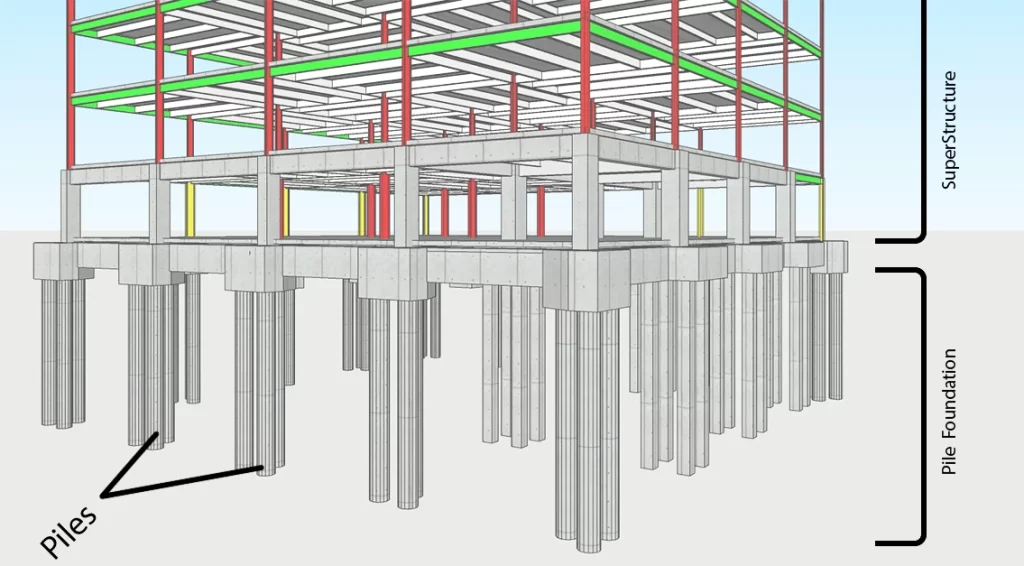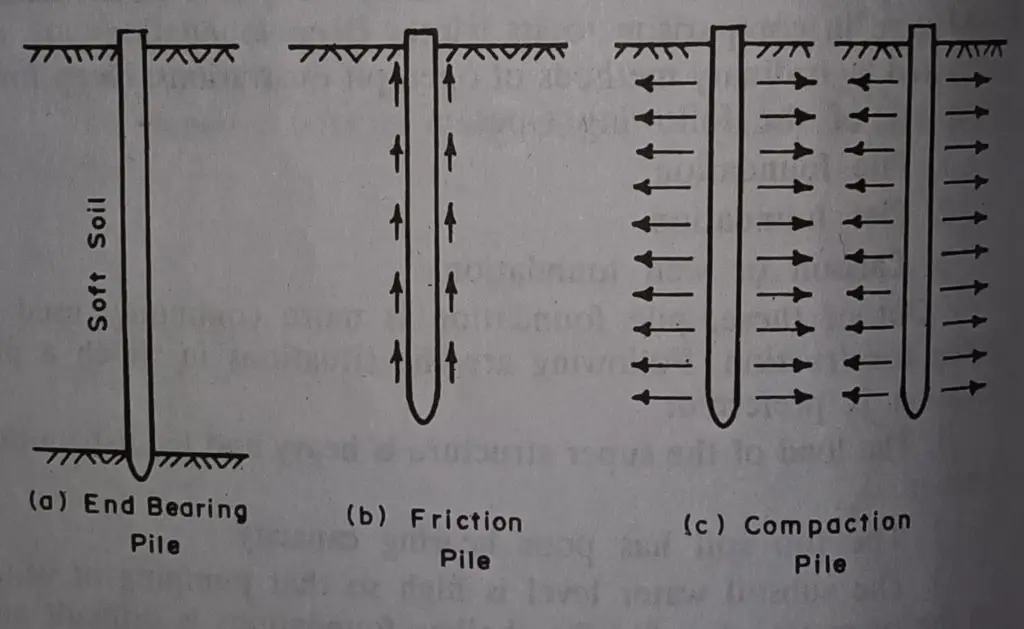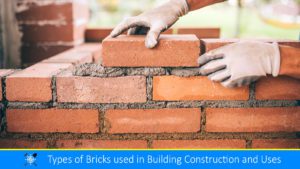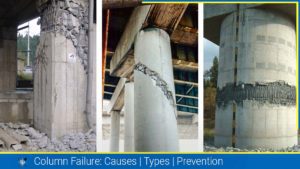The use of piles as a foundation can be traced to olden times. The art of diving piles was well established in Roman times and the details of such foundations were recorded by Vitruvius in 59 A.D. Today, pile foundations are much more common than other types of deep foundations. Modern pile driving started with the first steam pile drivers, invented by Nasmyth in 1845.
In this article, we will explore the pile foundation and its classification based on function, materials and composition which are used in the construction industries such as buildings, walls and bridges.
What is the Pile Foundations?
A pile foundation is a type of deep foundation as the depth of the foundation is comparatively greater than its width. Amongst, the other deep foundations, pile foundations are more commonly used in building construction. They are used in the following situations:
- The load of the superstructure is heavy and its distribution is uneven.
- The topsoil has poor bearing capacity.
- The subsoil water level is higher so pumping of water from the opening trenches for the shallow foundations is difficult and uneconomical.
- There are large fluctuations in subsoil water level.
- If a deep strip foundation is attempted, timbering of sides is difficult to maintain or retain the soil of the sides of the trench.
- The structure is situated on the sea shore or river bed, where there is danger of scoring action of water.
- Canal or deep drainage lines exist near the foundations.
- The topsoil is of expansive nature.
Also, read: What is expansive soil?

Types of Pile Foundations
Pile may be classified as follows:
- Classification based on Function or Action
- Classification based on Materials
- Classification Based on Method of Installation
Also, read: Different Types of Foundation Used in Construction
a. Classification Based on Function
It may be classified as follows based on the function or action:
End Bearing Piles:
This type of pile is used to transfer load through water or soft soil to a suitable bearing stratum.
Friction piles:
They are used to transfer loads to the depth of a friction load-carrying material by means of skin friction along the length of piles.
Compacting piles:
These are used to compact loose granular soils, thus increasing their bearing capacity. The compaction piles themselves do not carry any load. Hence they may be of weaker material of sand only. The pile tube, driven to compact the soil, is gradually taken out and sand is filled in its place thus forming a ‘sandpile’.
Tension or uplift pile:
This pile anchors down the structures subjected to uplift due to hydrostatic pressure or due to an over-turning moment.

Anchor piles:
They provide anchorage against horizontal pull from sheet piling or other pulling forces.
Fender piles and dolphins:
They are used to protect water from structures against impact from ships or other floating objects.
Sheet pile:
Sheet piles are commonly used as bulkheads, or as impervious cut off to reduce seepage and uplift under hydraulic structures. The batter piles are used to resist large horizontal or inclined forces.
b. Classification Based on Materials
- Timber Pile
- Concrete Pile
- Steel Pile
- Composite Pile
- Concrete and Timber
- Concrete and Steel
Also, read: Soil Nail and Soil Nailing: Reinforcing Slope Stability
- Timber Pile
A timber pile consists of the trunk of a tree, stripped of branches. Typically, timber piles are either square or circular in cross-section. The circular timber pile typically ranges in diameter from 300 to 500 mm (millimetres), while the square pile falls within the same size range. It’s recommended that the length of the timber pile does not exceed 20 times its top width.
To improve penetration into the ground and safeguard against breakage, one end (bottom) of the timber pile is often fitted with either a cast-iron shoe or a steel strip. These piles are driven into the ground using light pile-driving equipment. To prevent damage to the head of the pile during driving, an iron ring is secured at its top. The diameter of the ring is typically about 25 mm less than the diameter or size of the pile head.
Timber piles have a small bearing capacity and they are prone to damage by hard stratum or boulders. They can take loads up to 20 tonnes.

- Concrete Pile
The concrete pile is of two types as Pre-cast and Cast-in-situ pile. The pre-cast pile is used for a maximum design load of about 80 tonnes (800kN), except for the large pre-stressed piles. Pre-cast piles are reinforced to sufficiently withstand stress. They require space for casting and storage. Adequate time is required for setting and curing before installation. Require heavy equipment for handling and driving the pile.
The cast-in-situ concrete piles are generally used for a maximum design load of 75 tonnes (750kN) except for compacted pedestal piles. They are installed by pre-excavation, thus eliminating vibration due to driving and handling stresses. Cast-in-situ piles may be of two types, namely driven piles and bored piles.
- Steel Pile
A steel pile may be of a rolled section, a fabricated shape or a piece of sheet pile. Two or more sections of sheet piles may be connected in a box shape and driven as one pile. The metal pile may have been used since 1838, in the form of cast iron pipes or solid wrought iron shafts with disk or screw flanges penetrating only short distances. In present days, steel piles are used in H-piles, Box piles and tube piles.
- Composite Pile
Composite piles are suitable where the upper part of a pile is projected above the water table. Such a pile consists of a lower portion of untreated timber and an upper portion of concrete. In other types of composite piles, steel piles are attached to the lower end of cast-in-situ concrete piles. The two most common types of composite piles are:
- Concrete and Timber
- Concrete and Steel
c. Classification Based on Method of Installation
Piles may also be classified as follows based on the method of installation:
Driven piles
Timber, steel, or precast concrete piles may be driven into position either vertically or at an
inclination. If inclined they are termed ‘batter’ or ‘raking’ piles. Pile hammers and pile-driving
equipment is used for driving piles.
Cast-in-situ piles
Only concrete piles can be cast in situ. Holes are drilled and these are filled with concrete.
These may be straight-bored piles or maybe ‘under-reamed’ with one or more bulbs at intervals.
Reinforcements may be used according to the requirements.
Driven and cast-in-situ piles
This is a combination of both types. Casing or shell may be used. The Franki pile falls in this
category.
Also, read: Bearing Capacity of Soil: The Foundation of Geotechnical Excellence
Installation of Pile Foundations
The piles are first cast at ground level and then hammered or driven into the ground using a pile driver. A machine known as a pile driver is used to drive the pile into the ground. A machine holds the pile vertically and hammers it into the ground by the repeated process of lifting a heavy weight and dropping it onto the pile. The hammering is done until where a pile cannot be pushed into the soil.
The method of piling is an important consideration in the structural integrity of pile foundations. This method of driving pipe is an ideal choice because it disturbs the supporting soil around the pile the least and results in the highest bearing capacity per pile. Since each pile has an area of influence on the surrounding soil, the piles must be far enough apart from each other so that the loads are evenly distributed.
Use Of Piles
The important ways in which piles are used are as follows:
- To carry vertical compressive loads,
- To resist uplift or tensile forces, and
- To resist horizontal or inclined loads.
Bearing piles serve the purpose of providing support for vertical loads in the foundations of buildings and bridges. These loads are either transmitted to the solid soil or rock beneath through soft strata or distributed across soft strata that cannot sustain concentrated loads from shallow footings. The former are referred to as point-bearing piles, while the latter are termed friction piles.
Tension piles, on the other hand, are employed to counteract upward forces in structures exposed to uplift, such as buildings with basements below the groundwater level, aprons of dams, or buried tanks. They also resist the overturning of walls and dams and function as anchors for towers, guy wires, and bulkheads.
Laterally loaded piles provide support against horizontal or inclined forces, as seen in the foundations of retaining walls, bridges, dams, and wharves, as well as in the construction of fenders in harbours.
FAQs:
Q: What are the different types of piles?
Ans: Based on their function, piles are classified as bearing piles, friction piles, friction-cum-bearing piles, batter piles, guide piles, and sheet piles.
Based on the composition of materials, piles are classified as timber piles, concrete piles, sand piles, or steel piles.
Q: What is the difference between a bored pile and a driven pile?
Ans: The fundamental difference between a driven pile foundation and a bored pile foundation lies in their point of manufacture. A driven pile is formed off-site under factory-controlled conditions and a bored pile is manufactured on-site and in place.
References:
- Punima, Dr. B. C., Jain, Er. A. K., & Jain, Dr. A. K. (2023). Building Construction (12th ed.). Luxmi Publication (P) Limited. https://www.laxmipublications.com/servlet/lpgetbiblio?bno=000200&pageName=Keywords
- Venkatramaiah, C. (2006). Geotechnical Engineering (3rd. Revision). New Age International Publishers
- Pile foundations. (2022, August 9). Designing Buildings Wiki. https://www.designingbuildings.co.uk/wiki/Pile_foundations
- Wikipedia contributors. (2024, February 12). Deep foundation. Wikipedia. https://en.wikipedia.org/wiki/Deep_foundation
![]()








I love that you talked about how this method of driving pipe is the best option since it causes the least amount of disturbance to the supporting soil surrounding the pile and produces the maximum bearing capacity per pile. My dad is planning to build his mini office near our house and the construction process starts next month. Thanks for helping me understand the Types of Piles for the Foundation, this will surely help my dad in deciding what type of pile he should use for a stronger foundation.
You are welcome. Hope your dad’s project goes well.